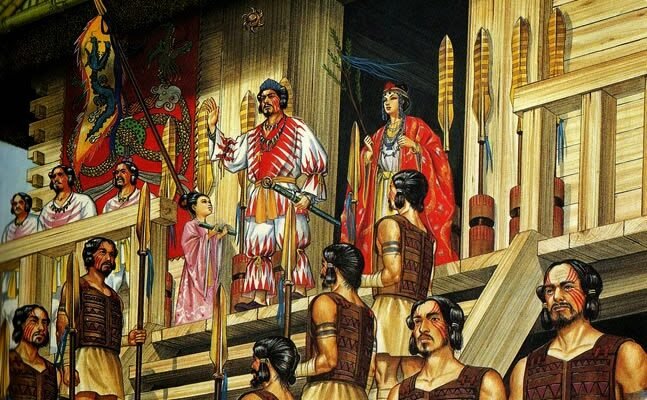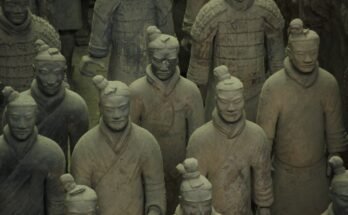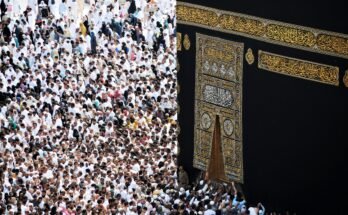Ancient Japan is a country that is well-renowned for its rich cultural history, complex social stratification, and artistic heritage and has been through the most important historical epochs that led to the development of Japanese civilization. A walk through the ancient history of Japan gives insight into how a small cluster of islands, which was scarcely known, started its growth towards originality, no matter if it is the form of custom, religious belief, political system, or artistic exploration that is convenient to the present-day society in Japan.
Besides the periodisation of ancient Japan, which can be a joyful series of epochs, it still shows a crucial part in the social, government, and cultural change the Japanese civilisation saw during the Jomon, Yayoi, Kofun, and Asuka ages.
The Jomon Period (14,000 BCE – 300 BCE): The Earliest Inhabitants
The Jomon period is the first known culture of ancient Japan because of the specific “cord-marked” (Jomon in Japanese) pottery characteristic of this age. At this time the Japanese inhabitants were mainly hunters, fishing, and gathering, though the evidence of early agricultural practices suggests they also used millet, for instance, in their gardens. The people of the Jomon period lived in semi-subterranean houses, usually aggregated in small, independently governed settlements. Their vessels with elaborate cord patterns, some of the oldest objects in the world, show the artistic inclinations of early Japanese people.
Excavations also indicate the Jomon people developed different ceremonial items, for example, the so-called “dogu” clay figurines, which, according to the common author, were symbols of spiritual importance. These sculptures often represent stylized human and animal figures that can be gods, according to one’s cultural beliefs, ancestors, or spiritual beings. The concentration on art and rituals could be evidence of the early creation of the beliefs which later culminated in the roots of Shinto.
The Yayoi Period (300 BCE – 250 CE): The Dawn of Agriculture and Metalworking
The Yayoi period stands as the era of the most major reform in the history of ancient Japan, as rice cultivation was introduced, probably originating from the Korean peninsula or China, which on the one hand is a cause of improvement in the lifestyle of people and social and technological development on the other hand. Rice farming was a place of such a switch to solid, organized, and permanent communities that it instigated population growth to a higher level and the hierarchy of society to come. Besides agriculture, the Yayoi people also mastered bronze and ironworking, creating tools, weapons, and ceremonial items out of these metals.
Social stratification became more distinct and pronounced as people started to live more complicated lives; thus, bigger and more complicated communities were formed. Man no longer had the power and belonged to small groups of people but seemed to be like such clans with their leaders, who in most cases were individuals who owned land or other resources. Political factors began to change because the regional clans started to gain more strength, and thus came the all-powerful political structures into being. The cultural practices of the Chinese were the first to flow into the society of the Yayoi at that time; something clearly manifested in the metalworking and agricultural techniques as well as the politically organized early Japanese.
The Kofun Period (250 CE – 538 CE): Formation of the Japanese State
The Kofun period (great keyhole-shaped tomb mounds) is thus named for the technique used in locating ancient graves. However, this same period was also when the centralized political power structure came into being in Japan. These enormous mounds of burials, some being 100 meters long, were the last resting place for the tribal chiefs and according to the principles of hierarchy and influence, they were the clan’s chiefs. The period is set in the Yamato family, taking over power from other clans with the beginning of the Japanese imperial family.
The Yamato clan had a monopoly on the high land of the Yamato Plain and it was through the promotion of the belief that they are of divine origin, which they said they were the descendants of the Sun Goddess Amaterasu. Such divinity was the basis of their political and spiritual rule that in later times would become the only unique Imperial ideology in Japan. Moreover, the period was also marked by the relationship with the Korean Peninsula and China, which led to the Chinese political elements and Buddhism and Confucian morality that would now shake Japanese society.
The time when these tombs were piled up was the period during which haniwa were manufactured and used as items for burial. They were clay figures developed to be placed around the tumulus and used as protectors of the deceased. Animals, warriors, and things from everyday life, such as dishes and tools, might appear as the figures. They are the ones who convey the ideology, the values, and the lives of the Kofun society to us through the past. The period of Kofun’s focus on constructing tombs and burial customs has been the basis for the populace’s increasing centralization of power as they were the people who finally brought the different parts of Japan into one.
The Asuka Period (538 CE – 710 CE): The Introduction of Buddhism and Political Reform
Asuka was an epoch of great importance in Japanese history as Buddhism was channeled into the country as an official religion. Japan was reached by Buddhism in the middle of the 6th century through Korea, and besides religious teachings, it also carried along with it Chinese cultural and political ideas. The initial opposition gradually faded and the new religion, especially because of its allegiances to the political power that it became, gained acceptance among the ruling elites. The arrival of Buddhist doctrines sparked a change in the Japanese way of practicing religion as they were both independently and simultaneously augmented by Shinto, the native religion, which happily coexisted with the introduction.
Prince Shotoku, a figure of utmost importance in the Asuka period, was the main follower of both Buddisms and Confucius, the outcome of which was Japan’s cultural and political framework. Shotoku passed the Seventeen-Article Constitution, a document outlining the principles of governance including such ethical obligations as mutual respect, obedience to the higher, and the citizens’ duty to the state. Though not called a constitution in the present-day version, this document was the outline for a centralized state and it was the Yamato clan which was the governing authority that was instead accentuated through it.
The Chinese-style government reform of 645 was the next step in bringing all Japanese politics to one agency and also was the next step in the reorganization of the Japanese state. The imperial government, however, gained a lot of control over all agricultural land through the introduction of land reforms and new tax systems. These reforms, although they did not happen overnight, introduced the gradual movement towards a centralized imperial bureaucracy, which was the prelude to the Nara and Heian periods.
Art, Architecture, and Cultural Achievements in Ancient Japan
Every ancient period witnessed an outburst of art and architecture, with each era having its own styles and developments in that course of time. Jomon pottery is still a typological feature that has been used throughout the history of prehistoric Japan, and besides its age, it is so very beautiful. Yayoi ceramics were more polished and utilitarian, thus indicating the transition to the agricultural lifestyle.
The Kofun period hailed the rise of the construction of haniwa figures, which were an early form of sculpture, while also witnessing the building of Kofun tombs, which were architectural “accomplishments” at that time as well. In the Asuka period, Buddhist temples, including the Horyuji Temple, were constructed. The temple of the latest one is one of the oldest wooden ones in the world and remains a UNESCO World Heritage site today. The Asuka period was marked by the exhibiting temples of Chinese artistic technicalities added to the Japanese way of interpreting it; for instance, the pagoda style, which became the confined symbol of the Japanese Buddhist style.
Buddhism also gave way; the sector of painting and sculpture in Japan was also founded following the Chinese and Korean template, which was considered a catalyst for its existence anyway. Buddha statues were made out of bronze, wood, and stone, and the aesthetics of Buddhist art were used in Japanese art. These art achievements rely not only on Japanese society’s enhancing skills in art but also on mutual contacts among different cultures.




It’s important article so, post more articles
ok brother